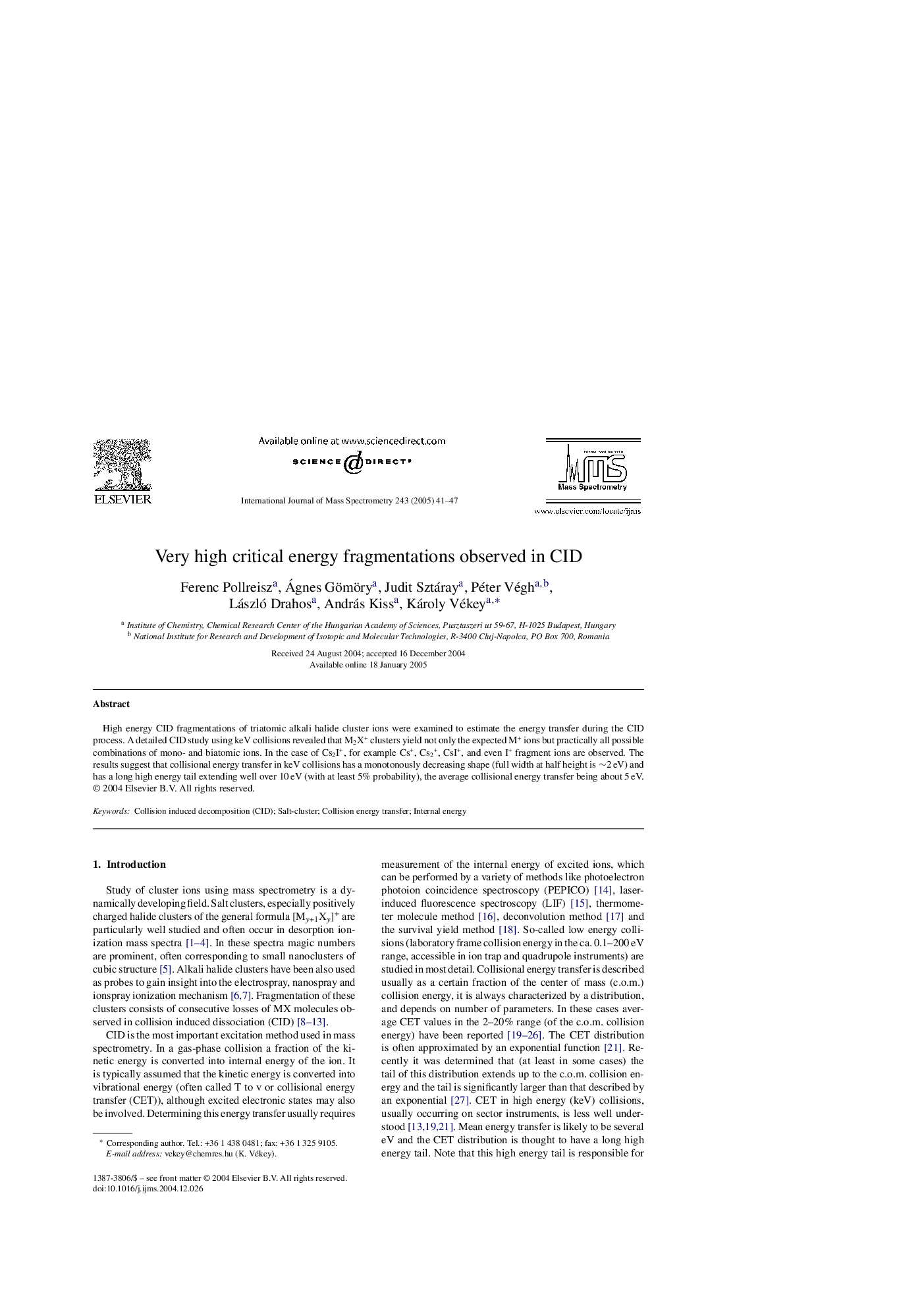| Article ID | Journal | Published Year | Pages | File Type |
|---|---|---|---|---|
| 9746697 | International Journal of Mass Spectrometry | 2005 | 7 Pages |
Abstract
High energy CID fragmentations of triatomic alkali halide cluster ions were examined to estimate the energy transfer during the CID process. A detailed CID study using keV collisions revealed that M2X+ clusters yield not only the expected M+ ions but practically all possible combinations of mono- and biatomic ions. In the case of Cs2I+, for example Cs+, Cs2+, CsI+, and even I+ fragment ions are observed. The results suggest that collisional energy transfer in keV collisions has a monotonously decreasing shape (full width at half height is â¼2Â eV) and has a long high energy tail extending well over 10Â eV (with at least 5% probability), the average collisional energy transfer being about 5Â eV.
Keywords
Related Topics
Physical Sciences and Engineering
Chemistry
Analytical Chemistry
Authors
Ferenc Pollreisz, Ágnes Gömöry, Judit Sztáray, Péter Végh, László Drahos, András Kiss, Károly Vékey,
